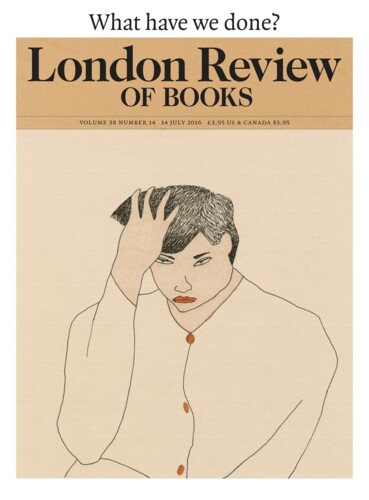Jeremy Bernstein
Jeremy Bernstein’s Nuclear Iran will be published by Harvard in October.
Most undergraduates at Harvard live in a ‘House’. When I went to the university in 1947 the place was overcrowded with soldiers and sailors returned from the war. So I spent the first two years in Dudley Hall, the ‘non-residents’ student centre’ in Harvard Yard. My room was number 46: I know this precisely because I have a letter sent to this address by Albert Einstein, dated 3 June 1949, telling me he did not give ‘oral interviews to avoid misinterpretation’. Since Dudley wasn’t considered a House it didn’t have a ‘master’ but a ‘graduate secretary’. Then in autumn 1949 I moved into Eliot House.
When I lived in Paris in the early 1960s the Bataclan was a cinema. It had been converted into one in 1926. (Incidentally, bataclan means junk; ‘tout le bataclan’ is slang for the whole ball of wax, or all that jazz.) I don’t recall going to it: there were so many other cinemas. It was built in 1864 as a site for café concerts. You could have your dinner and listen to an act. From the outside the building looked like a Chinese pagoda: chinoiserie was the mode.
Glenn Seaborg, Joseph W. Kennedy, Edwin McMillan and Arthur Wahl discovered element 94 in Berkeley in 1941. McMillan and Philip Abelson had discovered element 93 the previous year. When Martin Heinrich Klaproth isolated element 92 in pitchblende in 1789, he called it uranium after the recently discovered planet Uranus. The scientists at Berkeley named elements 93 and 94 after the planets Neptune and Pluto. The discovery of plutonium was kept secret until after the war. At Los Alamos it was called ‘49’. This did not help much since Klaus Fuchs gave all the details about the bomb to the Russians. The Germans also realised the value of element 94 for making bombs but they never could make a reactor to produce the stuff.
The Iran University of Science and Technology in Tehran was founded in 1929 as a school of engineering. It became a general technological institute in 1972. It now has more than a dozen departments with thousands of undergraduate and postgraduate students. Few if any American universities have a more complete list of undergraduate physics courses. Looking at the faculty reveals an interesting split. The senior professors all did much of their degree work abroad. One of them for example was an undergraduate at Columbia. The junior faculty, including one woman, all did their degree work in Iran. In another generation, it may be that all of Iran’s physicists will have been educated in Iran. No other country in the Middle East would show a demographic like this. Taken in the large this means that Iran has a serious scientific infrastructure, which must be taken into account in any negotiations over its nuclear programme. The notion that the country can be negotiated into a scientific stone age is nonsense.
Pieces about Jeremy Bernstein in the LRB
A Cheat, a Sharper and a Swindler: Warren Hastings
Brian Young, 24 May 2001
Early in his career as the first Governor-General of the East India Company in Bengal, Warren Hastings instituted an annual dinner for fellow old boys of Westminster School. He paced his own...
Read anywhere with the London Review of Books app, available now from the App Store for Apple devices, Google Play for Android devices and Amazon for your Kindle Fire.
Sign up to our newsletter
For highlights from the latest issue, our archive and the blog, as well as news, events and exclusive promotions.


